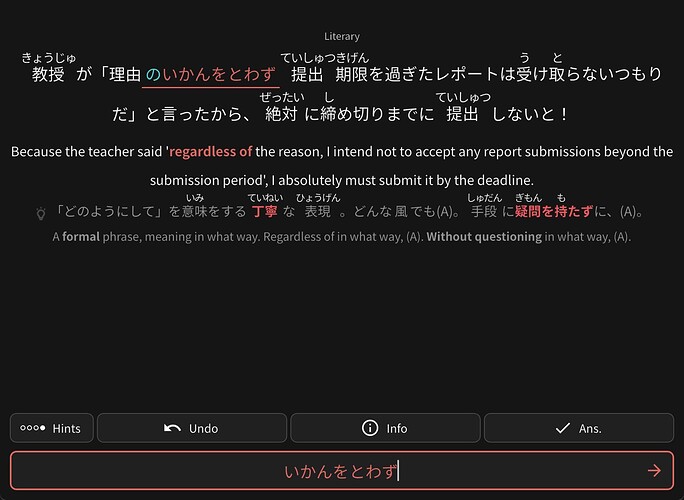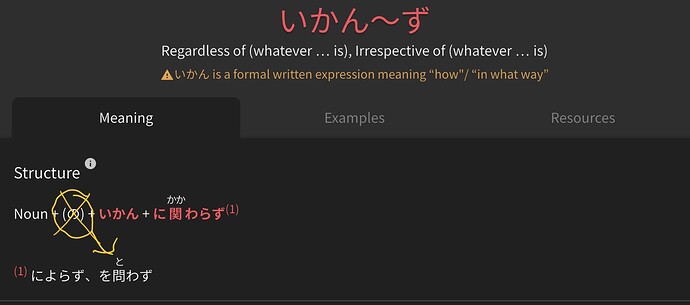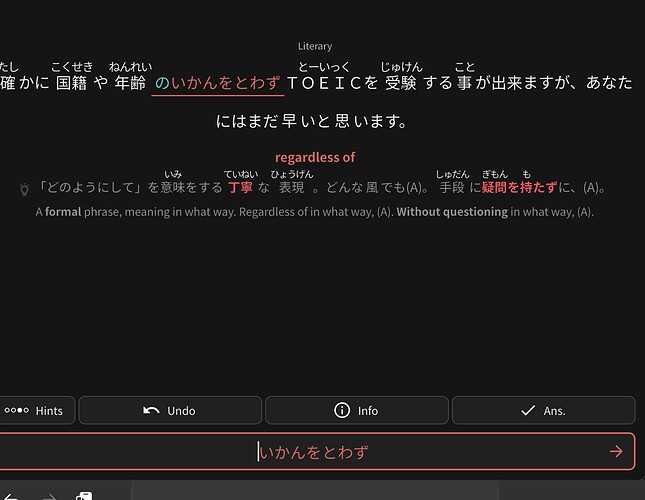According to the grammar structure guide, 如何を問わず looks correct. I reported this as an alternative answer and the response was: “如何を問わず is acceptable and is in the list of answers we accept!” Is this a case where the mobile app pulls outdated question data or is it something else?
Isn’t the issue with の missing?
I find it a little unclear. The description of the grammar point explicitly says “いかん~ず comes after a noun followed by the case marking particle の” and most example sentences seem to follow this, but not all. 如何 itself is a noun so it makes sense for の to be there. Are the example sentences without の incorrect?
Some questions allow you to omit の while others don’t. If it’s required in some instances why is it okay to omit elsewhere?
A lot of the N1 example sentences don’t have the most robust alternative answers compared to lower levels, so it’s likely that they haven’t accounted for all variations of possible answers (in this case making it so that answers are accepted both with and without the の). If you reported it already and received a reply, you can reply to the feedback and point this out.
Tagging @JamesBunpro since I know you’ve been working through some of the N1 content recently.
The N1’s inconsistency drives me insane too. Honestly a lot of it needs looking over.
I made this one a while back as well as its super noticeable and bad in N1
Hi @amberglade! Sorry for the inconvenience 
For this grammar point, all example sentences are set to accept に関わらず, によらず, and を問わず with or without の in reviews. I also tested it on both the website and the app, and (の) いかんを問わず was accepted.
Sorry if I or other staff already asked this in a previous feedback message, but is there a chance that you might be using an older version of the app? If so, updating it might solve this issue.
And if you’re already using the latest version, I’ll forward this to our dev team so they can take a closer look.



